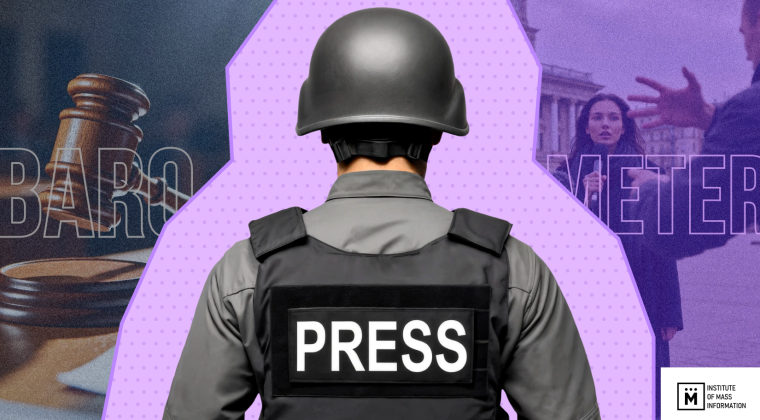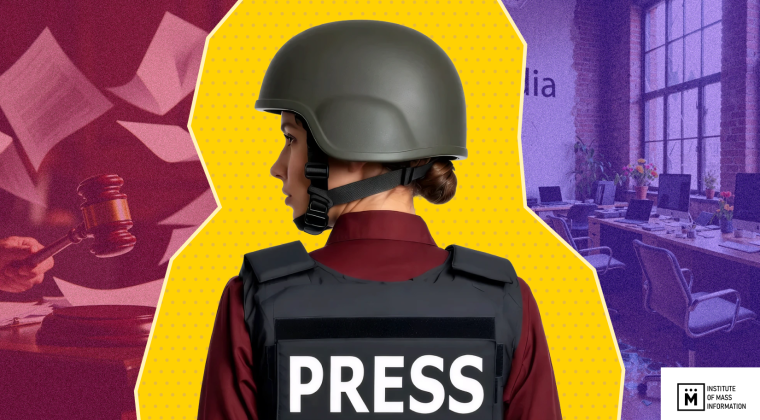russian propagandists are trying to influence the people of Odesa psychologically, trying to make them believe that military commissars are literally stalking everyone. To do this, anonymous pro-russian Telegram channels mass post messages about where they allegedly hand out call-ups. Moreover, they are using quite ironic slang – “one-way tickets,” “ticket to Kobzon’s concert,” and the soldier groups who do this are nicknamed “Nazgul,” “demons,” or “death’s postmen.” 5–10 posts of similar content appear every day.
All these messages alternate with photos of “peaceful” Odesa, nature, “kittens,” even on the days of the greatest upheavals caused by the shelling attacks on the region and other cities of the country with mass casualties.
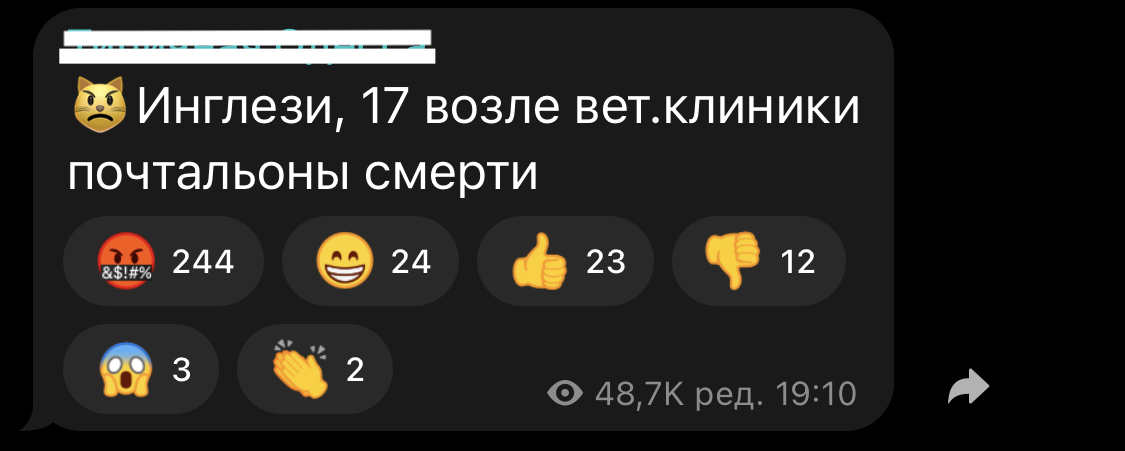
Posts in Telegram channel “Tipichnaya Odessa”
According to a recent report by the Centre for Strategic Communications and Information Security, two Telegram channels that call themselves “Odesa-based” have ties to the russian intelligence services – “Tipichnaya Odessa” and “Odessky Fraer.” According to the findings of this Odesa media space review, these two Telegram channels were the loudest cases of spreading disinformation and fakes. For example, “Typichnaya Odessa” spread russian propaganda fakes about the Deputy Spokesman for the UN Secretary-General Farhan Haq condemning the shelling of civilian infrastructure in Nova Kakhovka by Ukraine. This fake was recently refuted by Ukrainian fact-checkers from StopFake.
In fact, Farhan Haq refused to comment on the explosions in Nova Kakhovka. Moreover, he said nothing about the UAF allegedly shelling “civilian infrastructure” in the city temporarily occupied by russian troops. This false statement was made by russia’s deputy ambassador to the UN, Dmitrii Poliansky.
The Telegram channel “Odessky Fraer” also posted information that clearly contained exaggerations of real data, claiming “huge drug trafficking turnaround in Ukraine.” In addition, in the post about the ruling of the Pechersk District Court of Kyiv regarding the asset transfer of four Odesa hotels that were owned by russians, “Odessky Fraer” presents its own judgement as a fact, calling the court itself a “pocket court” and its decision an act of “racketeering.”
In another post, “Tipichnaya Odessa” claims that the West will “bring peace to Ukraine as soon as possible, even at the cost of Kyiv’s territorial concessions (the ‘Sholz doctrine’).” This statement is the kremlin’s main thesis, which is aimed at convincing Ukrainians of the futility of resisting russia further, and convincing the Western countries that Ukraine itself does not want peace and thus creates issues for the whole world.
Also, russian propaganda tries to downplay the efficiency of the UAF. One of the UAF’s most successful operations in Odesa in July was the liberation of Snake Island. Part of the russian troops and their equipment was destroyed on the island, another part was defeated in the sea. But the russian Ministry of Defense and propagandists decided to report it as an allegedly voluntary withdrawal of russia’s troops from the island after having allegedly fulfilled all their tasks, calling it a “goodwill gesture.”
In response, the Ukrainian Operational Command “South” posted a video of the operation, which confirms a large number of strikes on Snake Island. According to various estimates, the value of the equipment lost by the russians on Snake Island is around $915 million.
After the missile attack on industrial warehouses in Odesa on July 16, russian propaganda started teporting hits of “military targets,” “UAF facilities,” and “strikes on defense objects” in Odesa. Pro-kremlin media resources tried to convince their audience that the warehouse in Odesa had munitions stored in it. Namely, the russian media outlets Pravda.ru, RIA FAN, Russkaya Vesna reported that “the russian armed forces hit the UAF warehouses in Odesa with Kh-101 cruise missiles.” Pro-kremlin Telegram channels were also pushing a narrative about the fuel and lubricant materials or UAF equipment allegedly stored in Odesa warehouses. But the warehouses hit by the russian Kh-101 cruise missile in Odesa on July 16 were not military facilities. The cause of the fire, the fact that it was quickly extinguished, and the absence of accompanying explosions indicate that there were no weapons or ammunition in this place. Video and photo evidence were posted by local media as early as three hours after the shelling, which is in line with the terms of the memorandum between the military and the journalists, according to which civilian objects under fire may be filmed after three hours since the bombing. If these were military facilities, it would only be possible to visit them after 12 hours.
Also, russian propaganda tries to put pressure on the citizens by lying about the significant one-time losses of the Ukrainian military after their shelling. On July 21, the russian Ministry of Defense announced about 600 Ukrainian soldiers being killed by the July 16 missile fire on the region. However, no evidence was provided. If such an event really occurred, then the city residents would immediately have started gossiping about the tragedy. This is what happened at the beginning of the war, when the significant losses after an insidious night shelling of military barracks were impossible to hide. Also, in the case of the announced number of people killed, there should also be a significant number of people wounded, which would also be difficult to hide, given that the local hospital is located within the city limits.
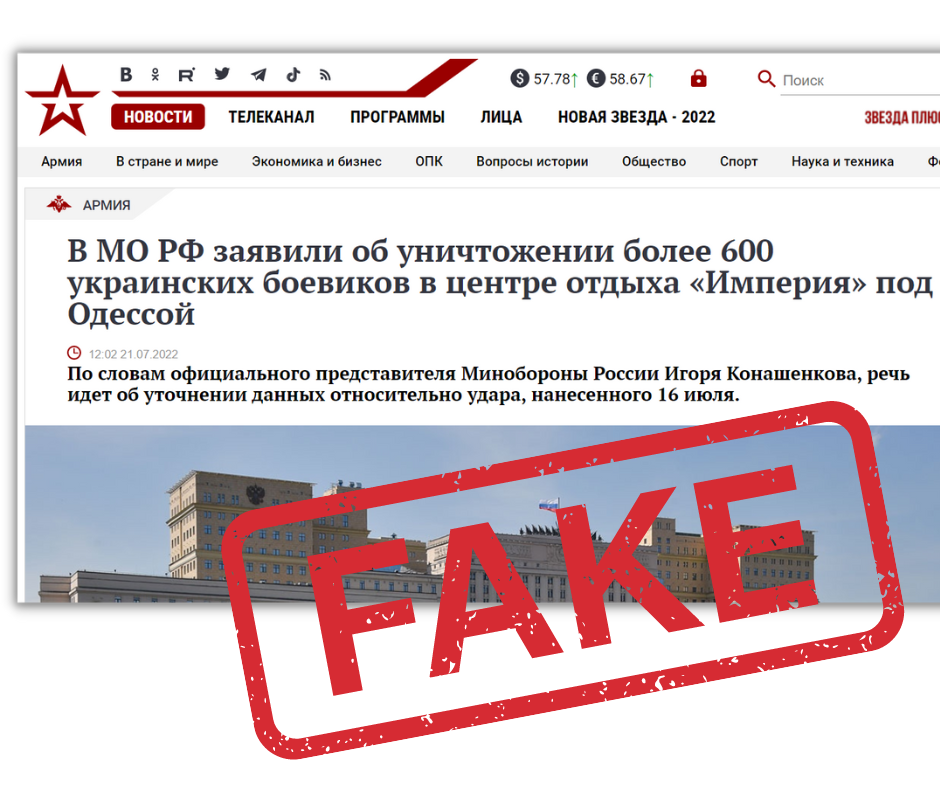
Fake news on russian TV channel “Zvezda”
Another interesting case was the spread of misinformation about the US consulate in Odesa allegedly closing down. But the problem is that the last American mission in the region closed back in 1918. In Dumska’s historical article, one can read that “in the second quarter of the 19th century, Odesa was already of serious interest to the other side of the Atlantic: our city became a competitor of American ports. At that time, grain was a strategic raw material. In 1830, the US consulate was established in Odesa, which existed until 1918, when it closed down due to the civil war. American diplomats used to meet across the Opera House, in building No. 6 on Tchaikovsky Lane.”
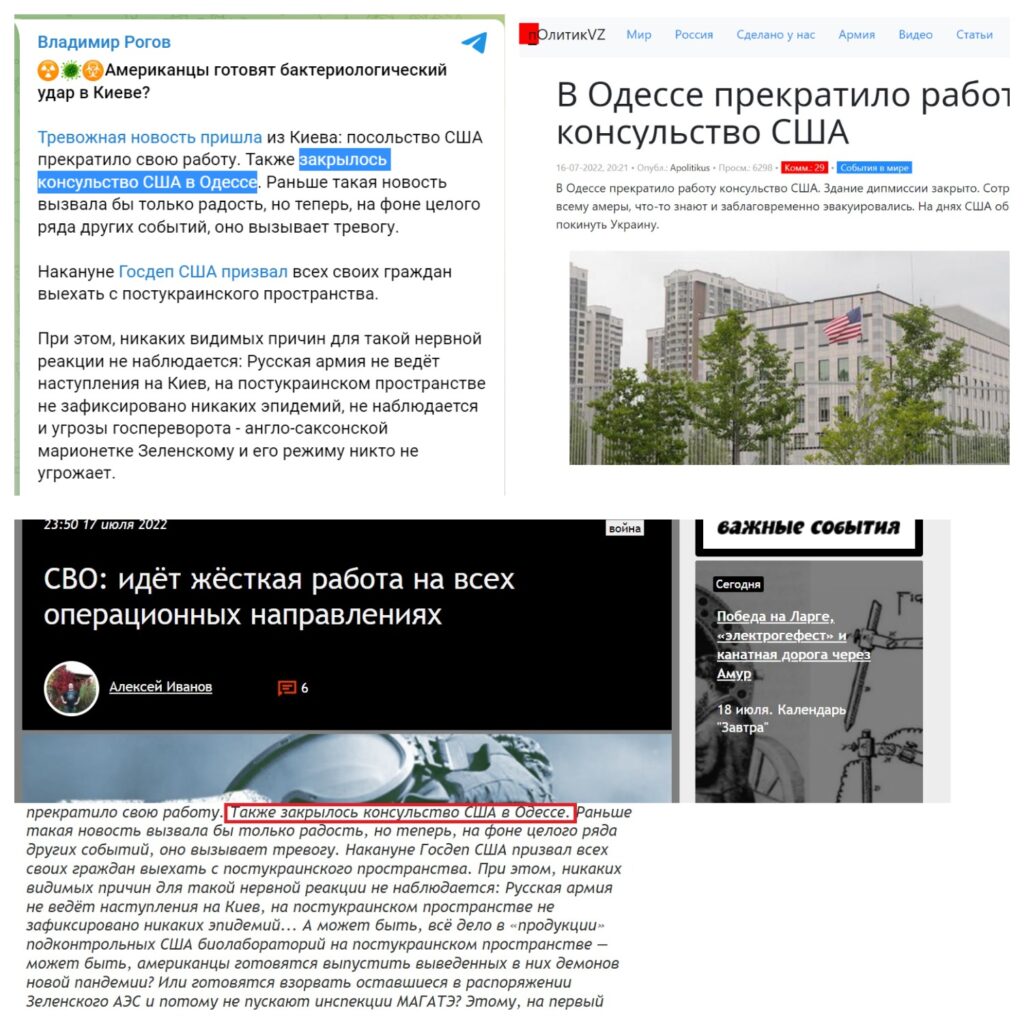
Screenshots of news items about this fake in russian media and on Telegram
The possible dismantling of the Monument to the City Founders on the Catherine Square in Odesa is one of the most discussed topics in the local media space. Several petitions about this on the website of the President of Ukraine collected the required 25,000 signatures. Ukrainians are jokingly proposing to replace the Catherine II monument with a monument to the American porn actor Billy Herrington (in fact, this petition also received the required number of signatures).
The main argument of those who oppose the dismantling the monument is that “Odesa was founded by Catherine II.” In the meantime, local pro-russian Telegram channels began to emphasized Odesa’s “imperial past.” For example, they post a photo from the russian empire times, actualizing the “Odesa is a russian city” thesis.
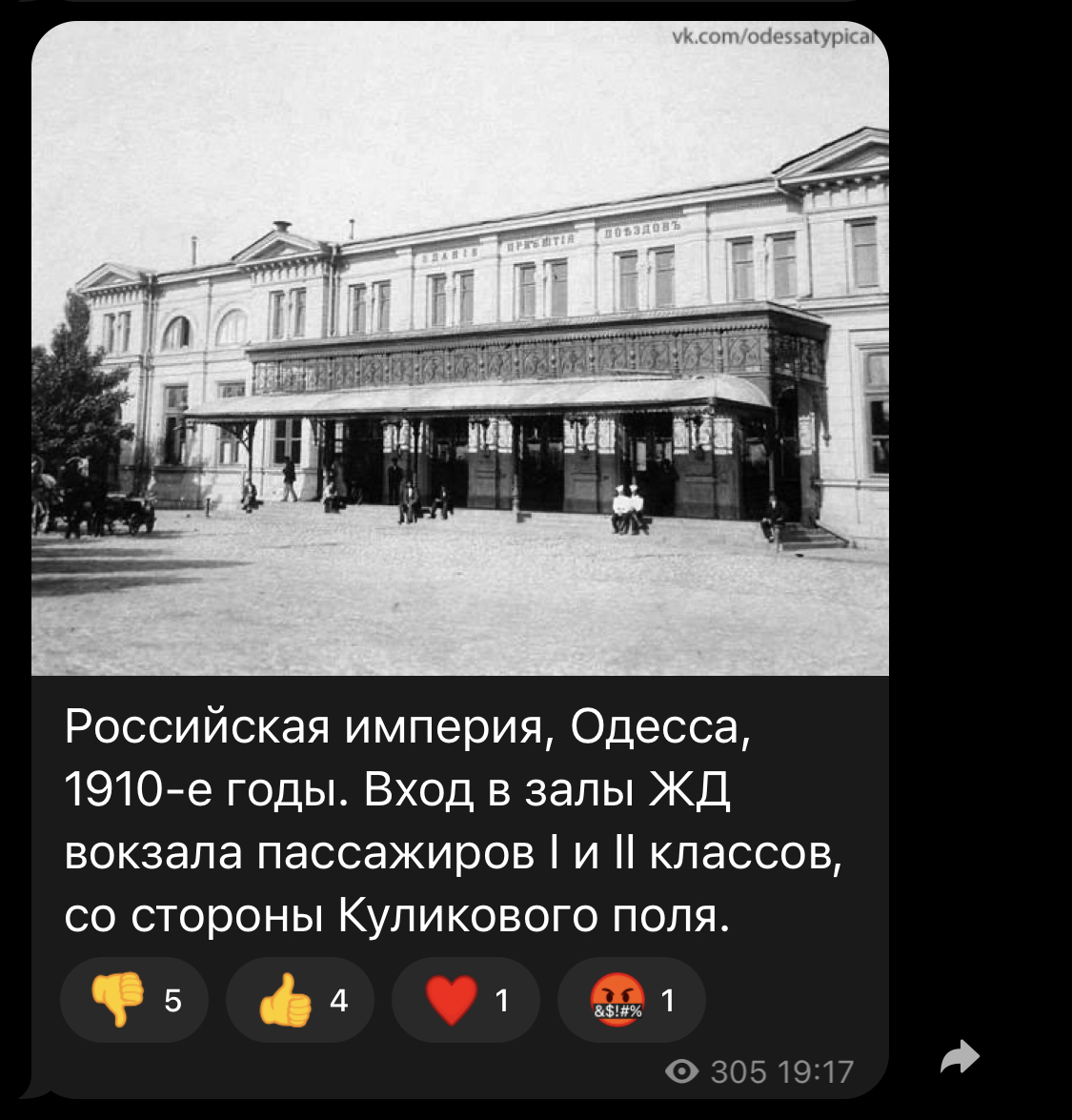
Post on Telegram channel “Tipichnaya Odessa”
russian state bodies showed their “media schizophrenia” after the July 23 missile attack on the Odesa port, the day after the “grain agreements” were signed. As the StopFake fact-checkers discovered, russian news websites and pro-russian blogs were actively spreading information about the UAF allegedly deliberately striking the port in Odesa because the signed grain agreements were disadvantageous for Ukraine: “This agreement allows Ukraine to export grain, but does not allow NATO warships to enter the Black Sea.” So, Ukraine, having attacked Odesa, allegedly made a desperate attempt to discredit russia. Some users even stated that the UAF hit the port with the HIMARS previously delivered by the United States.
On the evening of July 23, the russian state news agency TARS reported that the head of the Turkish Ministry of Defense allegedly said that russia had nothing to do with the shelling of Odesa. The propagandists referred to Hulusi Akar’s post on his official Twitter account. However, on July 24, the representative of the russian Foreign Ministry representative Maria Zakharova was already saying that the Kalibr missiles had destroyed a military infrastructure object at the Odesa port – a Ukrainian military boat. A day later, the Ministry of Defense of russia also reported that “a Ukrainian warship and a warehouse of Harpoon missiles stored in the Odesa seaport on the territory of the ship repair plant were destroyed by high-precision missiles.” It should be noted that the open source videos do not show detonation or a significant explosion, and the fire in the port was quickly extinguished by the State Emergency Service officers. In a published video of a port worker showing smoke in what he calls a “hydrography boat,” it is impossible to identify the veracity of his findings due to ash and fire. Operational Command “South” reported that there was a fire at the pumping station on the territory of the port.
The russian Ministry of Defense is also constantly reporting on the Ukrainian troops using hospitals, schools, and stadiums in the region as bases. So, at the end of July, they wrote about the soldiers staying on the territory of the sports section in Bilhorod-Dnistrovsky. After this post, the city’s mayor went there and showed live that the territory was empty, noting that the parents did not let the children go to class that day.
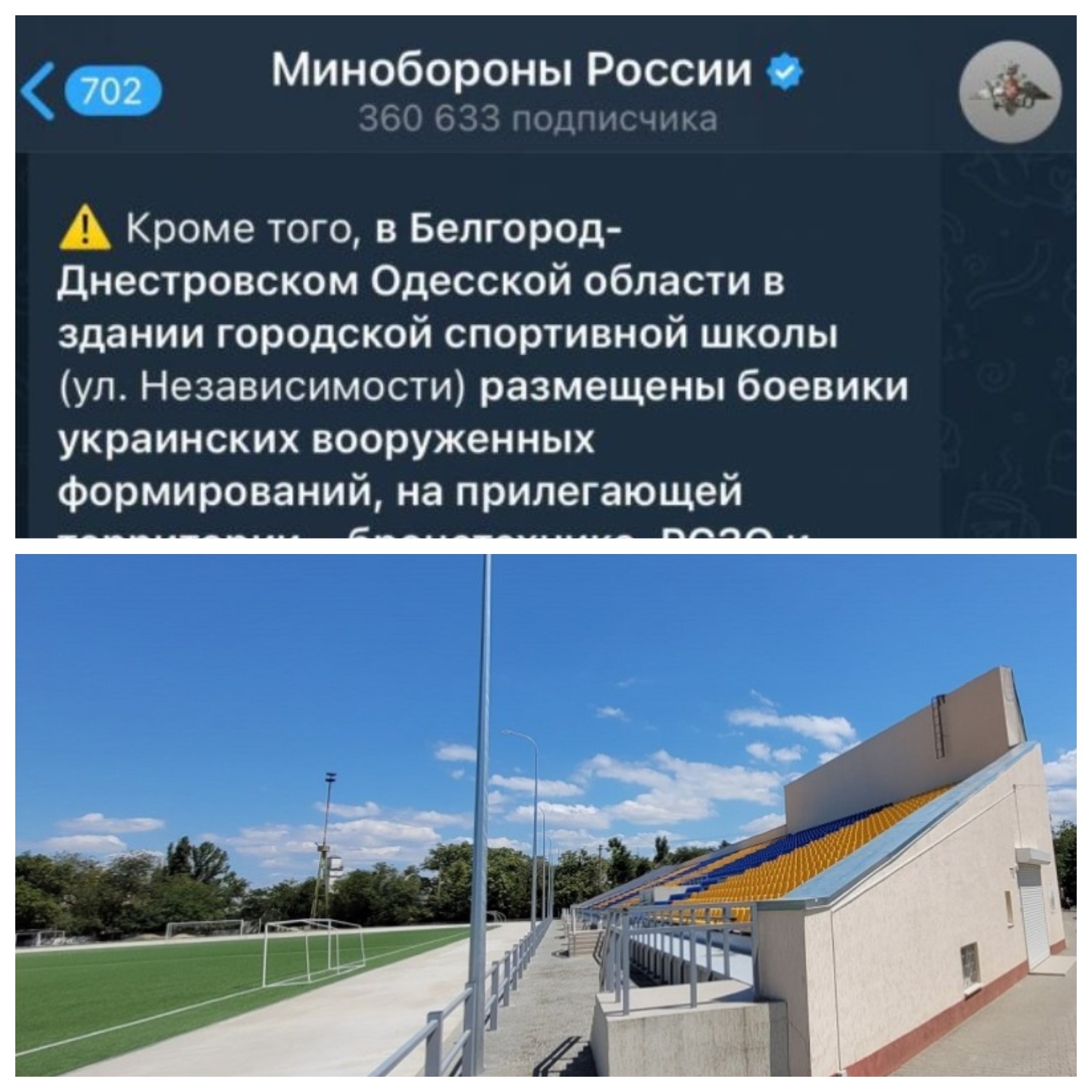 Screenshots from the Telegram channel of the russian Ministry of Defence and of Bilhorod-Dnistrovsky mayor’s Facebook post
Screenshots from the Telegram channel of the russian Ministry of Defence and of Bilhorod-Dnistrovsky mayor’s Facebook postrussian propaganda considers Odesa to be a target region, which is why new cases of information manipulation and fakes are constantly being recorded. However, it should be noted that russian propaganda is quite localized and isolated and is only operating on russia-dependent media resources or anonymous groups on social media and messenger apps, although the total number of their subscribers is almost 100 thousand readers.
Pavlo Kolotvin, regional representative of the Institute of Mass Information in Odesa region.

